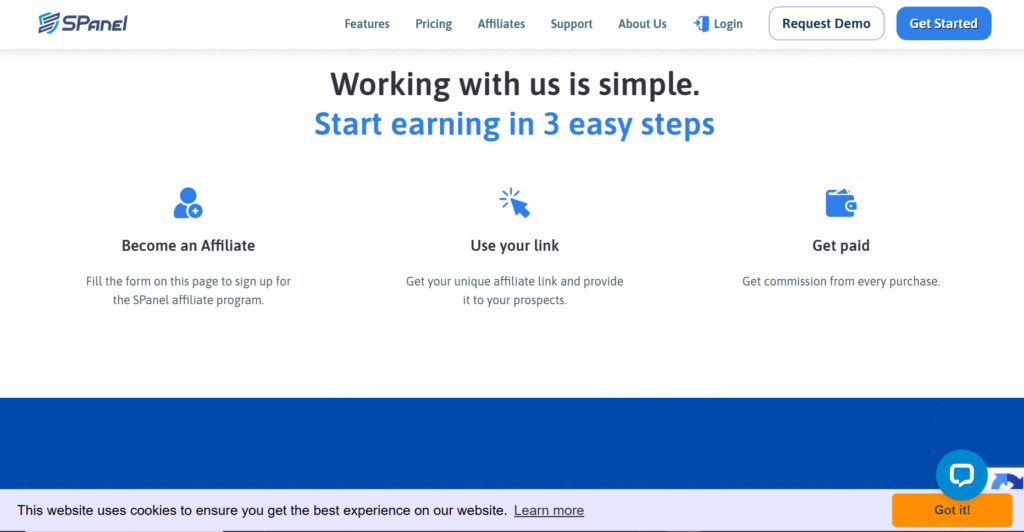If you’re searching for a modern, lightweight, and developer-friendly web hosting control panel, this Spanel review will tell you why it’s quickly becoming the preferred alternative to cPanel and other traditional options. Built with performance and simplicity in mind, Spanel offers everything from server management to domain control in a clean, intuitive interface.
Let’s explore what makes Spanel stand out in 2025.

What is Spanel?
Spanel is a modern cloud-based hosting control panel designed to simplify server and website management. Created for developers, freelancers, and hosting companies, Spanel eliminates the bloat and complexity of traditional panels like cPanel and DirectAdmin.
With a streamlined user experience, Spanel allows full control over email accounts, file systems, databases, domains, SSLs, and more—without needing deep sysadmin knowledge.
Key Features of Spanel
1. Lightning-Fast Interface
Spanel is built with speed at its core. Unlike older panels that feel sluggish, Spanel’s UI is responsive, modern, and easy to navigate. Tasks like creating a domain or deploying SSL are just a few clicks away.
2. Full Server Management
From the dashboard, users can manage:
- Domains and subdomains
- Email accounts and forwarding
- MySQL & PostgreSQL databases
- Cron jobs
- PHP versions
- DNS records
- SSL certificates (including free Let’s Encrypt)
Whether you’re running a single website or managing hundreds of client projects, Spanel’s centralized control panel handles it all with ease.
3. Integrated File Manager
Spanel features a robust, browser-based file manager that lets you upload, edit, compress, and manage files—without needing FTP or SSH. Ideal for quick changes or non-technical users.
4. Staging & Cloning
Developers will appreciate Spanel’s site cloning and staging environment tools. You can easily duplicate websites for testing or migration, ensuring zero downtime during major updates.
5. High-Level Security
Security is a top priority in Spanel’s architecture. The platform includes:
- Built-in firewall management
- Two-factor authentication (2FA)
- Isolated user environments
- Secure SSL installation
- Fail2Ban protection
- Resource limits per user (CPU, memory, bandwidth)
This keeps every account safe from abuse and cross-contamination.
6. Backup & Restore
Spanel offers automated daily backups, with easy restore options in case something goes wrong. You can configure custom backup schedules or restore individual files, databases, or emails.
Spanel vs. cPanel: What’s the Difference?
While cPanel is the industry standard, it has become outdated and resource-heavy for many users. Here’s how Spanel compares:
| Feature | Spanel | cPanel |
|---|---|---|
| UI/UX | Modern & fast | Outdated & cluttered |
| Pricing | Predictable monthly fee | Per-account pricing |
| Staging/Cloning | Built-in | Requires extra plugins |
| Performance | Lightweight | High server resource usage |
| File Manager | Powerful & intuitive | Basic and slow |
| Open for Developers | Yes (API + CLI) | Limited |
Spanel shines by giving more control and better performance, especially for developers and hosting resellers.
Who is Spanel For?
Spanel is perfect for:
- Freelancers and Developers: Deploy and manage client sites easily.
- Hosting Providers: Offer scalable control to customers without paying per-account.
- Agencies: Manage multiple client websites from a single panel.
- Non-technical Users: Clean UI and tutorials make it beginner-friendly.
Whether you’re migrating from cPanel or starting fresh, Spanel simplifies every step.

Performance & Resource Usage
Spanel is significantly lighter on server resources than its competitors. Because of its modular design, it doesn’t load unnecessary services. This translates into faster websites and better uptime for end users.
It also works well with NGINX and LiteSpeed setups, giving you flexibility in how you deploy your stack.
Support and Documentation
Spanel offers 24/7 support and extensive documentation. Their customer success team is responsive, and the built-in help section covers nearly every feature. Their blog and guides are also kept up to date with the latest tutorials and industry trends.
Pricing Plans
Spanel offers a transparent and simple pricing model based on server usage—not per website. This gives agencies and hosting providers full freedom to grow without scaling costs uncontrollably.
While exact pricing may vary depending on your setup, expect:
- No per-account costs
- Flexible VPS and Dedicated Server pricing
- Volume discounts for resellers and partners
Compared to cPanel’s per-account billing, this can save hundreds of dollars annually.

Pros and Cons of Spanel
✅ Pros:
- Blazing fast interface
- All-in-one hosting control
- No per-account billing
- Developer-friendly features (API, CLI, staging)
- Secure and lightweight
❌ Cons:
- Still growing compared to older panels
- Requires VPS/Dedicated setup (not shared hosting)
- Some advanced features may need manual config
Final Verdict: Is Spanel Worth It in 2025?
Yes—Spanel is absolutely worth trying in 2025, especially if you’re looking for a powerful, modern, and cost-effective hosting control panel. It outperforms legacy systems like cPanel in both speed and usability, while offering more flexibility to developers and hosting providers.
If you’re tired of bloated dashboards, hidden fees, and slow UIs—Spanel is the upgrade you’ve been waiting for.
Visit the official site to get started: https://www.spanel.io

